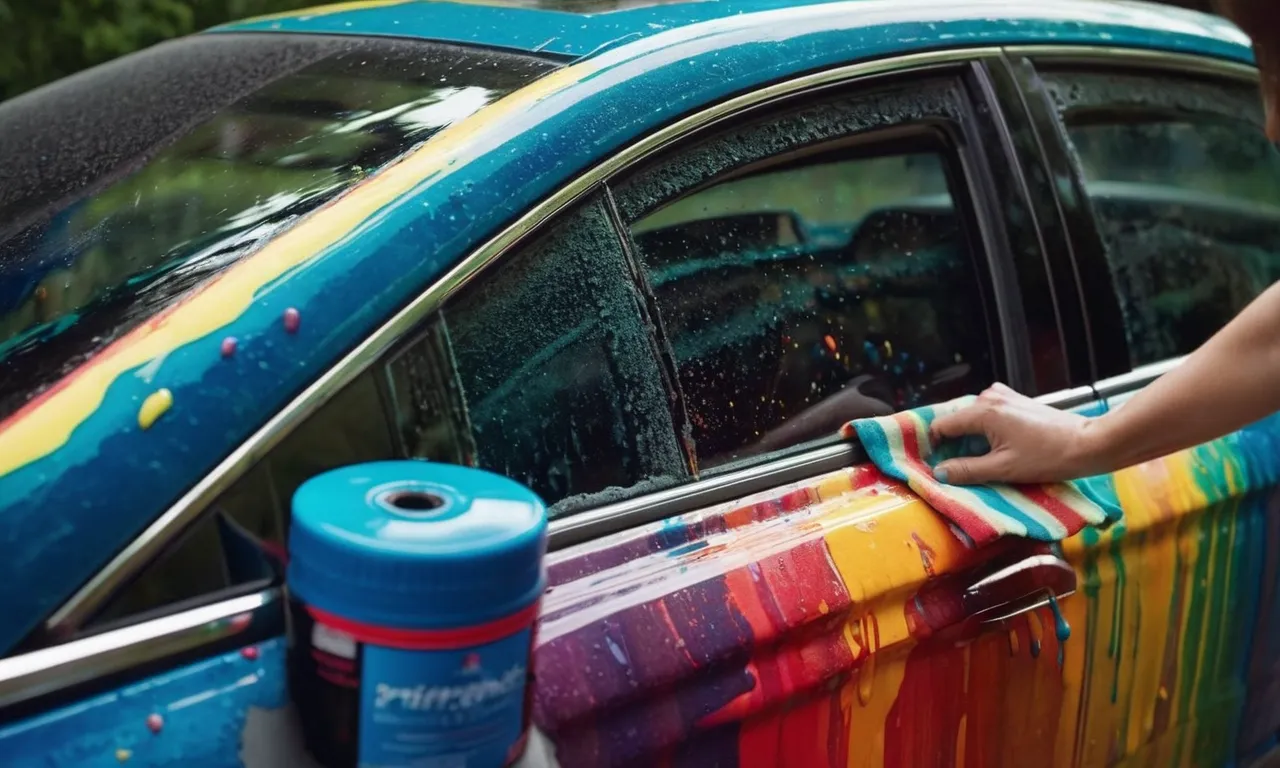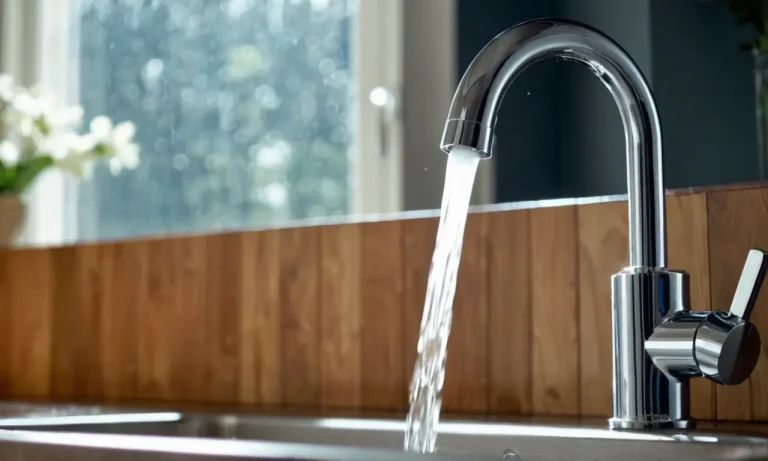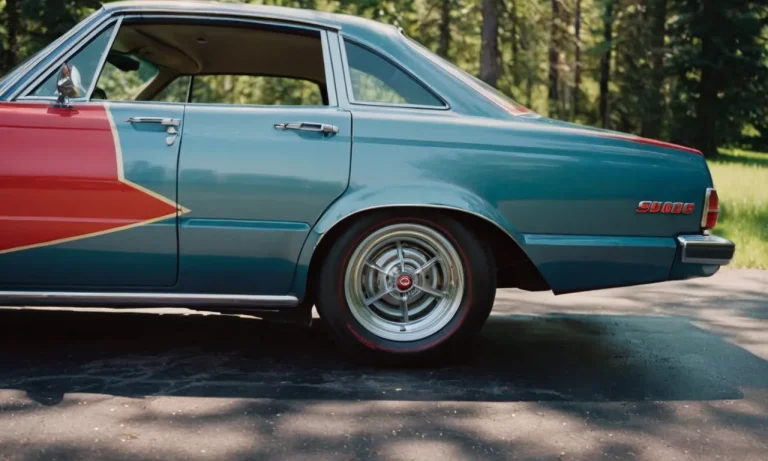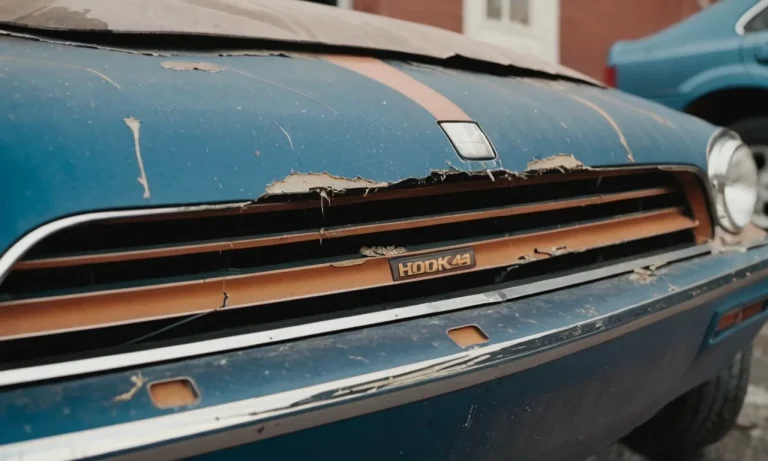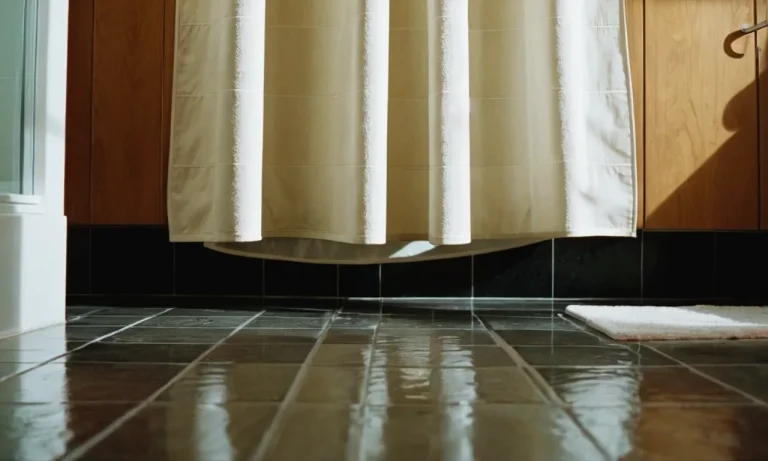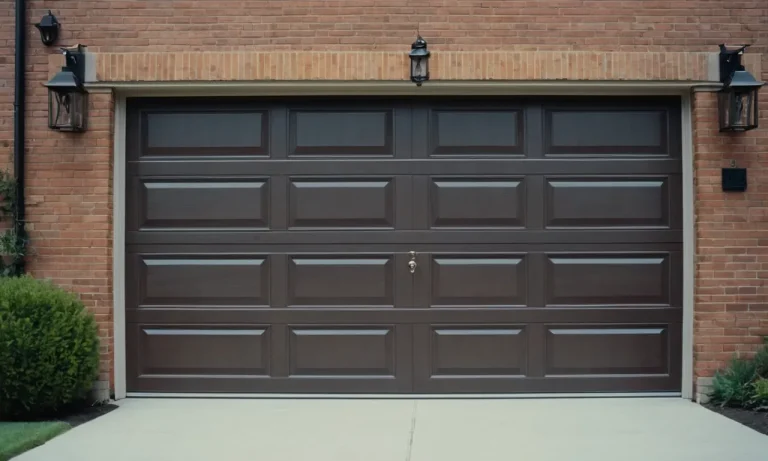How To Get Paint Off Car Windows: A Complete Guide
Finding paint splattered on your car’s windows can be annoying and unsightly. If left untreated, dried paint can be difficult to remove and may cause permanent damage to your windows. Fortunately, there are several effective methods for cleaning paint off car windows safely and efficiently.
If you’re short on time, here’s a quick answer to your question: use a plastic scraper to gently lift paint off the glass, then clean with isopropyl alcohol, acetone nail polish remover, or window cleaner. Test on a small area first to ensure it doesn’t damage the tinting.
In this comprehensive guide, we’ll cover everything you need to know to get paint of your car’s windows. You’ll learn how to prepare for the job, the best tools and solvents to use, techniques for lifting paint, how to clean the glass properly afterwards, and tips to prevent paint from getting on your windows in the future.
Assess the Type and Location of Paint
Before attempting to remove paint from your car windows, it is important to assess the type and location of the paint. This will help you determine the most effective method for removal and ensure that you do not damage the glass in the process.
Check if the paint is wet or dry
The first step in assessing the paint is to determine whether it is wet or dry. Wet paint is easier to remove as it has not fully dried and adhered to the glass surface. In this case, you can use a gentle method such as wiping it off with a damp cloth or using a mild soap solution.
If the paint is dry, it may require a more rigorous approach. Dry paint has hardened and may require the use of specialized products or techniques to effectively remove it without causing damage.
Determine the type of paint
Next, you’ll want to determine the type of paint that has been applied to the car windows. Different types of paint may require different removal methods.
If you are unsure about the type of paint, it is recommended to consult with a professional or refer to trustworthy automotive resources for guidance. Websites such as cars.com or caranddriver.com can provide valuable information on paint removal techniques and products.
Look at where the paint is stuck – on interior or exterior glass
Lastly, you’ll want to determine where the paint is stuck – whether it is on the interior or exterior glass surfaces of your car.
If the paint is on the exterior glass, you may have more flexibility in terms of the removal method. However, if the paint is on the interior glass, you’ll need to take extra caution to avoid damaging any electronic components or upholstery.
By assessing the type and location of the paint, you can approach the removal process with confidence and choose the most appropriate method for your specific situation.
Gather the Proper Materials
Plastic paint scraper
When it comes to removing paint from car windows, having the right tools is essential. One of the first items you will need is a plastic paint scraper. This tool is designed to safely and effectively remove paint without causing any damage to the glass surface.
The plastic material helps prevent scratches and ensures a smooth removal process. Make sure to choose a scraper with a comfortable handle for easy maneuverability.
Isopropyl alcohol, acetone, or ammonia-free window cleaner
The next item on your list should be a cleaning solution that can effectively dissolve the paint and make it easier to remove. Isopropyl alcohol, acetone, or an ammonia-free window cleaner are all great options.
These substances are known for their ability to break down paint particles and make them easier to wipe away. Be sure to use them in a well-ventilated area and follow the instructions on the product label for the best results.
Microfiber cloths and paper towels
Having the right cleaning materials is crucial for a successful paint removal process. Microfiber cloths and paper towels are ideal for wiping away the dissolved paint and leaving your car windows clean and streak-free.
Microfiber cloths are known for their ability to trap dirt and grime effectively, while paper towels can provide a more absorbent option for larger paint spills. Use a combination of both to ensure a thorough cleanup.
Drop cloths or towels
Protecting the surrounding areas of your car is just as important as removing the paint itself. To prevent any accidental spills or splatters, use drop cloths or towels to cover the car’s interior and exterior surfaces.
This will safeguard your vehicle from any potential damage and make the cleanup process much easier. Remember, prevention is always better than cure!
Gloves and eye protection
Safety should be a top priority when dealing with any chemical substances or sharp tools. To protect your hands from potential irritation or harmful chemicals, wear gloves throughout the paint removal process.
Additionally, wearing eye protection such as goggles or safety glasses will shield your eyes from any accidental splashes or fumes. Taking these precautions will ensure a safe and hassle-free experience.
Try Gentle Removal Techniques First
Getting paint off car windows can be a frustrating task, but before you reach for harsh chemicals or abrasive tools, it’s worth trying some gentle removal techniques. These methods are less likely to damage your car’s windows and can be quite effective in removing paint stains.
Use a plastic scraper to lift wet paint
If the paint on your car’s windows is still wet, you can try using a plastic scraper to gently lift it off. Start by holding the scraper at a slight angle and carefully scrape the wet paint from the window. Be careful not to apply too much pressure, as this can scratch the glass.
Once you have removed as much paint as possible, use a clean cloth to wipe away any residue.
Apply window cleaner and wipe with microfiber cloth
If the paint has dried on the window, you can try using a window cleaner to soften it. Spray the window cleaner directly onto the paint and let it sit for a few minutes. Then, take a microfiber cloth and gently wipe the paint in a circular motion.
The combination of the window cleaner and the soft cloth should help to loosen the paint and remove it from the window.
Spray vinegar and rub with a damp cloth
Vinegar is a versatile household ingredient that can also be used to remove paint from car windows. Fill a spray bottle with vinegar and spray it directly onto the paint. Let the vinegar sit for a few minutes to soften the paint. Then, take a damp cloth and rub the paint in a circular motion.
The acidic properties of vinegar can help break down the paint and make it easier to remove.
Rub the area with peanut butter, then wipe clean
While it may sound unconventional, peanut butter can be surprisingly effective at removing paint from car windows. Apply a small amount of peanut butter to the painted area and gently rub it in. The oils in the peanut butter can help break down the paint and make it easier to remove.
After rubbing the peanut butter into the paint, use a clean cloth to wipe away the peanut butter and the paint.
Remember to always test these methods on a small, inconspicuous area of your car’s window before applying them to the entire stained area. If you are unsure about using any of these techniques, it’s best to consult a professional for advice.
Use Solvents for Dried, Stubborn Paint
When it comes to removing dried and stubborn paint from your car windows, solvents can be your best friend. Solvents are powerful substances that can break down and dissolve paint, making it easier to remove. Here are some effective methods using solvents:
Apply alcohol or acetone with cloth and gently rub
Alcohol and acetone are common solvents that can effectively remove dried paint from car windows. Simply soak a cloth in either alcohol or acetone and gently rub the affected area. The solvent will work to loosen the paint, making it easier to wipe away.
Be sure to use a gentle rubbing motion to avoid scratching the glass.
Soak paper towel in ammonia and lay over paint for 20 minutes
Ammonia is another powerful solvent that can help remove stubborn paint from car windows. To use this method, soak a paper towel in ammonia and lay it over the paint. Leave it in place for about 20 minutes to allow the ammonia to penetrate the paint and soften it.
Afterward, gently wipe away the paint with a clean cloth or paper towel.
Cover with baking soda paste, allow to dry, then scrape off
Baking soda is known for its abrasive properties, which can be useful for removing dried paint. Create a paste by mixing baking soda with a small amount of water. Apply the paste to the paint on your car windows and allow it to dry completely.
Once dry, use a plastic scraper or credit card to gently scrape away the hardened paint. Be careful not to use anything sharp that could scratch the glass.
Remember, when using solvents to remove paint from car windows, it’s important to take precautions. Wear gloves to protect your skin, and work in a well-ventilated area to avoid breathing in fumes. Additionally, test the solvents on a small, inconspicuous area of your car window first to ensure they do not cause any damage.
For more detailed instructions and safety tips, you can visit reputable automotive websites such as Cars.com or Autoblog.com. They provide comprehensive guides on car maintenance and offer expert advice on removing paint from car windows.
Clean Windows Thoroughly Afterwards
Once you have successfully removed the paint from your car windows, it is important to clean them thoroughly to ensure a streak-free finish. Here are some steps you can follow to achieve sparkling clean windows:
Wash with soap and water then rinse well
Start by washing the windows with a mild soap and water solution. This will help remove any remaining residue from the paint removal process. Use a soft cloth or sponge to gently scrub the windows, paying special attention to any stubborn spots.
Rinse the windows thoroughly with clean water to remove any soap residue.
Squeeze out cloth soaked in equal vinegar/water mix
To further clean and remove any streaks from the windows, soak a cloth in a mixture of equal parts vinegar and water. Squeeze out any excess liquid from the cloth, ensuring it is damp but not dripping.
Vinegar is an effective natural cleaner that can help remove any remaining dirt or grime from the windows.
Buff dry with microfiber cloth to prevent streaks
To achieve a streak-free finish, use a microfiber cloth to buff dry the windows. Microfiber cloths are great for cleaning glass surfaces as they are gentle and absorbent, leaving no lint or streaks behind. Use long, sweeping motions to dry the windows, working from top to bottom.
Remember, it is important to use a clean cloth for each step to avoid transferring any residue back onto the windows. Taking the time to clean your car windows thoroughly will ensure they look great and provide clear visibility while driving.
Tips to Avoid Paint on Windows
When it comes to painting projects, it’s important to take precautions to prevent any paint from getting on your car windows. Here are some helpful tips to avoid paint on windows:
1. Mask windows with painter’s tape and plastic sheeting when painting nearby
To protect your car windows from paint splatters, it’s a good idea to use painter’s tape and plastic sheeting. Carefully apply the painter’s tape along the edges of the windows, creating a barrier between the glass and the paint.
Then, cover the windows with plastic sheeting and secure it with additional tape. This will help prevent any paint from accidentally getting on your car windows.
2. Wash windows after finishing paint job to remove overspray immediately
After you’ve finished painting, it’s crucial to wash your car windows immediately to remove any overspray. Overspray refers to the fine particles of paint that can settle on surfaces nearby. If left unattended, overspray can dry and become difficult to remove.
Use a glass cleaner and a microfiber cloth to gently clean the windows, making sure to remove any lingering paint residue.
3. Park car inside garage when spraying paint projects
If you have the option, it’s highly recommended to park your car inside a garage when working on spray paint projects. This will provide an extra layer of protection and minimize the risk of any paint accidentally reaching your car windows.
Additionally, the enclosed space will help contain the fumes and prevent them from entering your car.
4. Rinse car thoroughly at self-serve car wash after driving through road paint
If you happen to drive through road paint, it’s essential to act quickly to prevent any damage to your car windows. As soon as possible, take your car to a self-serve car wash and use a high-pressure hose to rinse off the paint.
Avoid scrubbing the windows, as this could potentially scratch the glass. Instead, allow the water to flush away the paint gently.
By following these tips, you can effectively avoid paint on your car windows and keep them looking clean and clear. Remember, prevention is key when it comes to maintaining the overall appearance of your vehicle.
Conclusion
Removing paint from car windows can seem daunting, but with the right tools and techniques, you can get your glass looking sparkling clean again. Always start with the gentlest method possible, test on a small area first, and take care not to scratch the glass.
With some patience and elbow grease, you can get rid of paint splatters without damaging your windows. Following these tips will keep your car’s vision clear while maintaining the integrity of the glass.

